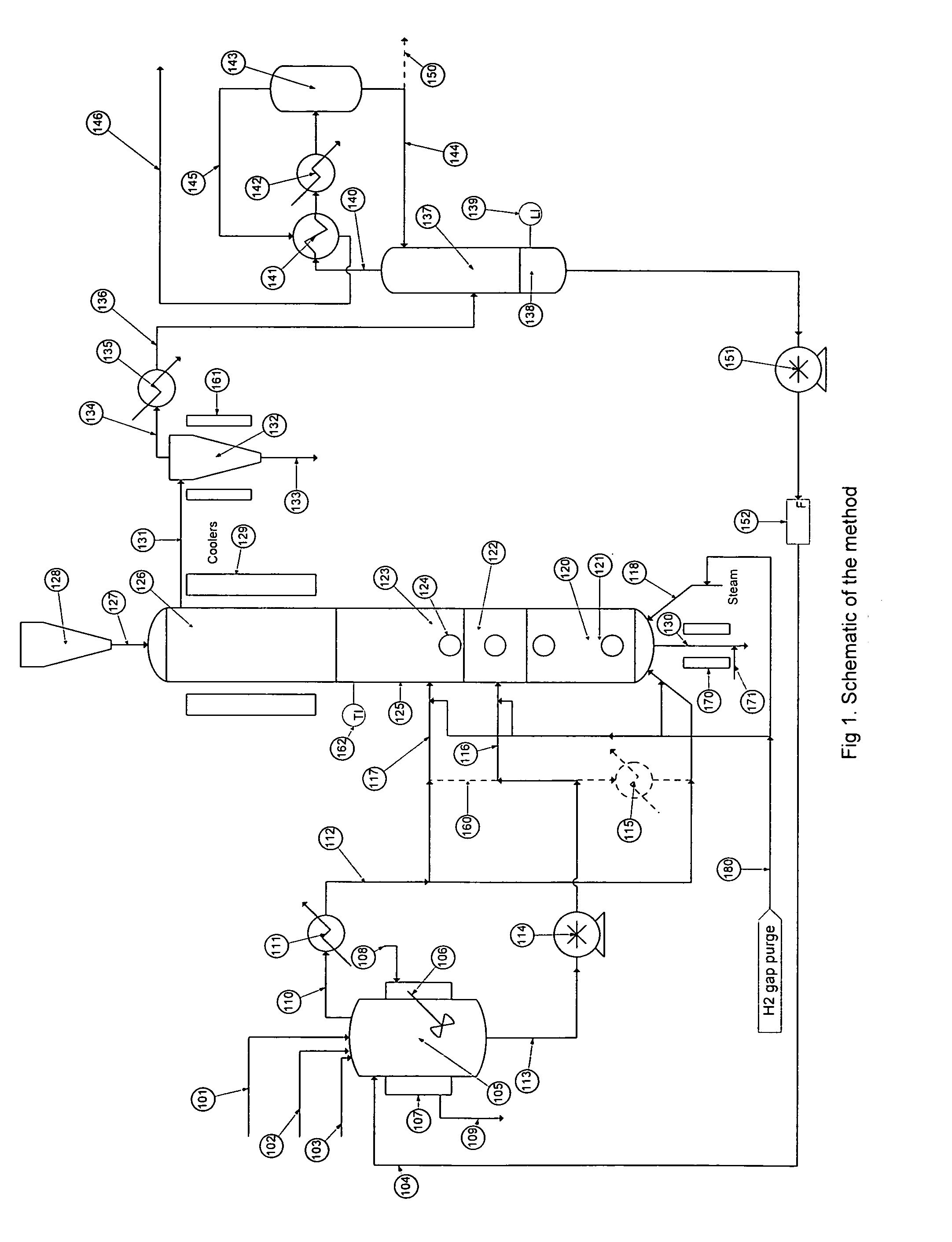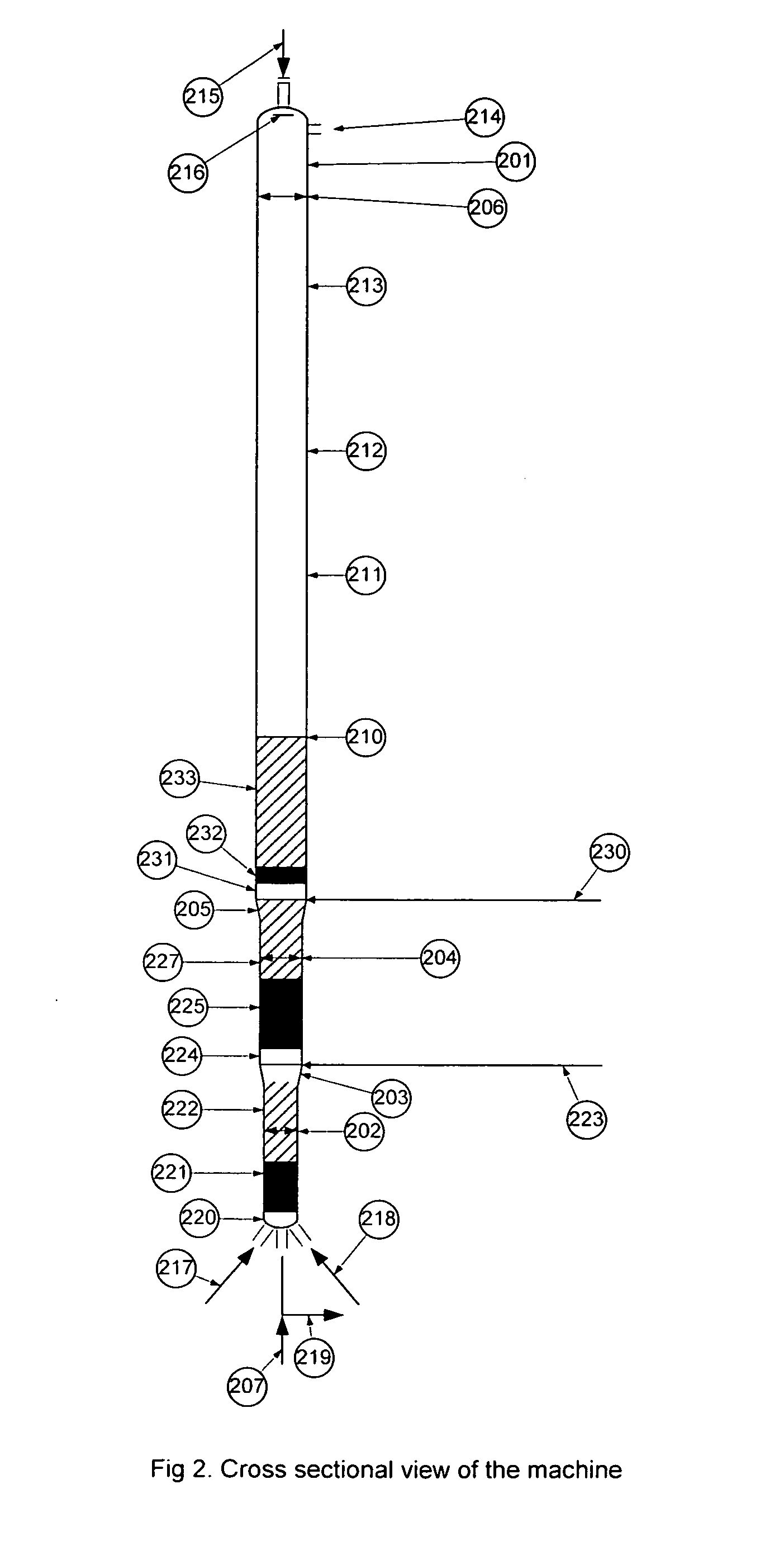Apparatus for high temperature hydrolysis of water reactive halosilanes and halides and process for making same
- Summary
- Abstract
- Description
- Claims
- Application Information
AI Technical Summary
Benefits of technology
Problems solved by technology
Method used
Image
Examples
Embodiment Construction
[0045]Detailed descriptions of the preferred embodiment are provided herein. It is to be understood, however, that the present invention may be embodied in various forms. Therefore, specific details disclosed herein are not to be interpreted as limiting, but rather as a basis for the claims and as a representative basis for teaching one skilled in the art to employ the present invention in virtually any appropriately detailed system, structure or manner.
[0046]Turning to FIG. 1 there is shown a flow schematic illustrating one of several ways the hydrolysis process may be implemented.
[0047]There is a stream containing solids and various halosilanes, 101, which comes from the initial purification, a high boiling stream, 102, which comes from halosilane recovery processes, a low boiling stream, 103, which comes from trihalosilane purification and a recycle flow stream, 104, which comes from the process itself. Typically the stream containing solids and various halosilanes, 101, will con...
PUM
 Login to View More
Login to View More Abstract
Description
Claims
Application Information
 Login to View More
Login to View More - R&D
- Intellectual Property
- Life Sciences
- Materials
- Tech Scout
- Unparalleled Data Quality
- Higher Quality Content
- 60% Fewer Hallucinations
Browse by: Latest US Patents, China's latest patents, Technical Efficacy Thesaurus, Application Domain, Technology Topic, Popular Technical Reports.
© 2025 PatSnap. All rights reserved.Legal|Privacy policy|Modern Slavery Act Transparency Statement|Sitemap|About US| Contact US: help@patsnap.com



